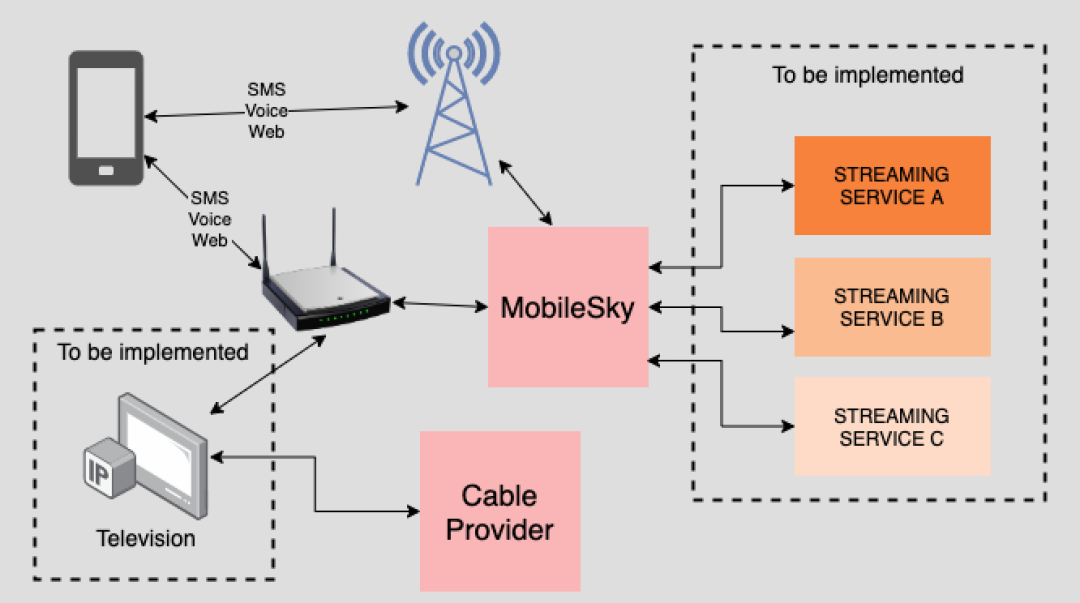Hiring enterprise architects: How to find great telco candidates

Photo by Christina @wocintechchat.com on Unsplash
In a behavioral-based interview, a candidate for an enterprise architecture position is presented with a predefined scenario and asked to create an architecture that satisfies the needs and conditions of that scenario. The goal of the exercise is to have direct, real-time experience with how the candidate performs.
Any scenario can lend itself to a wide variety of solutions. Thus, evaluating the response is not about seeing if the candidate provided the "right" answer. Instead, the goal is to see if the candidate can create a solution that makes sense both technically and in terms of business drivers.
In the first article in this series, I described behavioral-based interviews, and in the second and third articles, I presented scenarios for hiring enterprise architects for manufacturing and healthcare companies. This article provides a scenario for enterprise architects in the telco sector. The scenario is followed by some commentary about how to evaluate the candidate's response. Remember, this is not about getting the right or wrong answer. It's about gaining insight into the candidate's skills and creative and thinking processes.
The interview scenario: Telco
A mobile service provider has called you in to help design and implement a new service. The provider, named MobileSky, offers standard mobile phone services: voice, SMS, and connection to the internet for web browsers and mobile apps.
One of MobileSky's competitors just released a new service that allows its users to "cut the cord" and subscribe to streaming services for the major television networks using a mobile app or a home TV that's connected to the internet.
[ Free cheat sheet: IT job interview tips ]
To stay competitive, MobileSky needs to provide a cut-the-cord service.
Your assignment is to design the cut-the-cord service and provide an implementation plan. Your cut-the-cord service needs to have the following features:
- Service sign up
- Streaming service selection
- Content delivery
- Billing and payment
- Customer support
Along with the implementation plan, you need to provide a cost estimate and implementation timeline. An essential requirement for the cut-the-cord implementation is that there can be no interruption of an existing service offered by MobileSky.
Evaluating the candidate's response
There are three areas that the architect needs to consider when addressing the MobileSky scenario:
- Technical
- Financial
- Implementation
When evaluating the candidate's architecture, you need to be satisfied that these three areas are covered credibly.
In terms of the first area, technology, bear in mind that telco companies have many different technologies that support the wide variety of services they offer. Their tech stacks are pretty diverse—everything from older switching technology that handles wire-based telephone conversations to modern 5G installations. Hence, a candidate addressing a telco scenario needs to know a lot about how all these technologies and networks intertwine. Bringing a new set of services into the network can go far beyond simply setting up routers and firewalls to accommodate a new set of server IP addresses. Not only do the communication systems need to be integrated into the existing architecture, but they also need to address the issue of integrating the business systems, particularly around billing and payment.
The second area to consider is financial. As the scenario indicates, MobileSky wants to offer streaming services to keep up with the competition. Thus, the price and the quality of the streaming services must be on par or better than its competitors. The architect's design needs to articulate, in exacting detail, that the architecture can deliver quality streaming services competitively.
The third area is about implementation. How will existing services, such as customer sign in, integrate with the streaming services? At a fundamental level, who will be the customer subscribing to the streaming service? Will the customer be MobileSky on behalf of a given MobileSky customer, or will each MobileSky customer have a presence in the given streaming service's system? These are two fundamentally different approaches to customer integration. There will be other contexts to accommodate, too.
Also, in evaluating the candidate's response to the scenario, remember that the new cut-the-cord streaming service needs to not interrupt any existing services. This goes beyond the relative simplicity of distributing a new iOS or Android application. MobileSky will need to handle a new device—the television. Accommodating television opens up a new set of network challenges, particularly if MobileSky supports cable television set-top boxes. Integrating set-top boxes means MobileSky will need to create a relationship with various cable providers and integrate with their networks accordingly. Again, this is no small feat. The prospective architect will need to provide a credible plan for integration that addresses all aspects of adding cut-the-cord streaming to its service offerings.
[ Keep up to date with 7 tech trends reshaping enterprise architecture. ]
Putting it all together
The primary goal of the MobileSky scenario is to provide a use case against which to create a viable architecture for its intended cut-the-cord service. However, an added goal is to allow the architect to demonstrate the knowledge and experience required to work effectively in a telco system.
Telco systems are by nature complex infrastructures. Their history goes back over a century. The evolution from the simple point-to-point connection of wired telephones to a vast conglomeration of services and networks is nothing short of amazing. Thus, a candidate for a job as an enterprise architect working with telco systems needs to know a lot and have done a lot. Hopefully, candidates will use the MobileSky scenario to credibly demonstrate the skills, knowledge, and creative acumen necessary to work within the complexities of the telco environment.
This series focused on behavioral-based interviews in the manufacturing, healthcare, and telco sectors. If you have expertise in another industry to share with our readers, please consider writing an article about it for Enable Architect.






Bob Reselman
Bob Reselman is a nationally known software developer, system architect, industry analyst, and technical writer/journalist. More about me
Navigate the shifting technology landscape. Read An architect's guide to multicloud infrastructure.
OUR BEST CONTENT, DELIVERED TO YOUR INBOX



